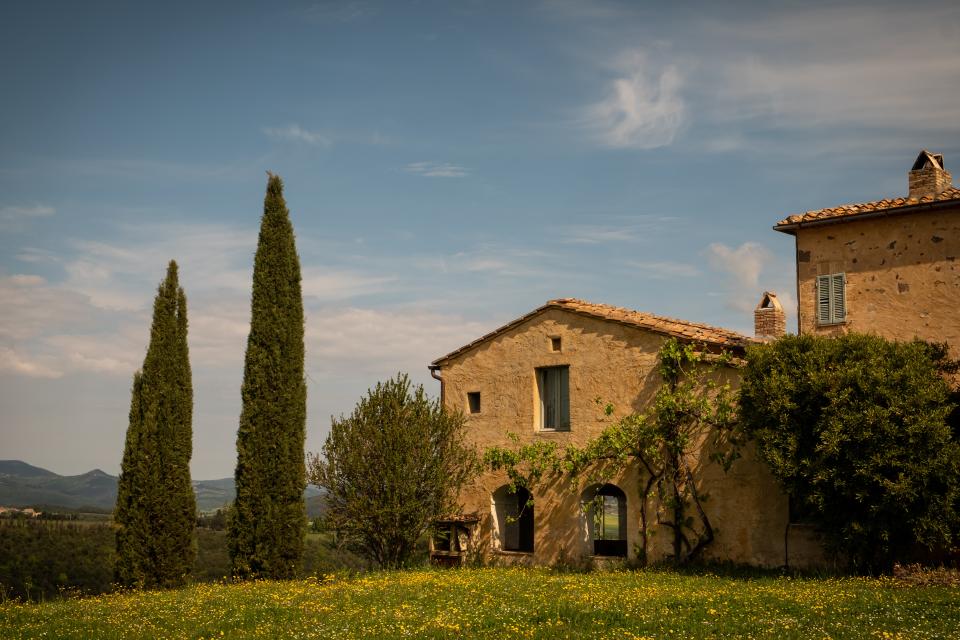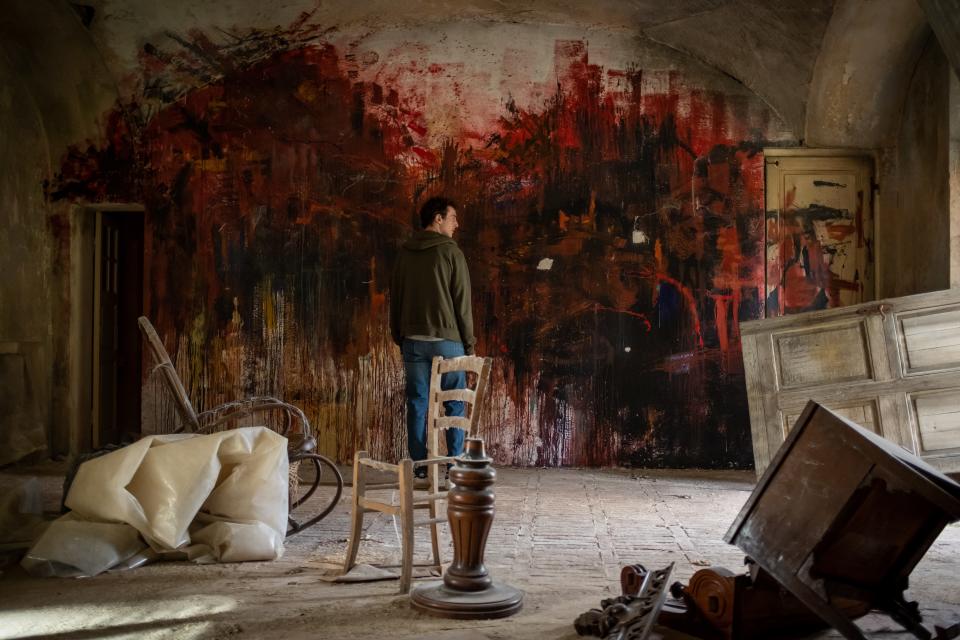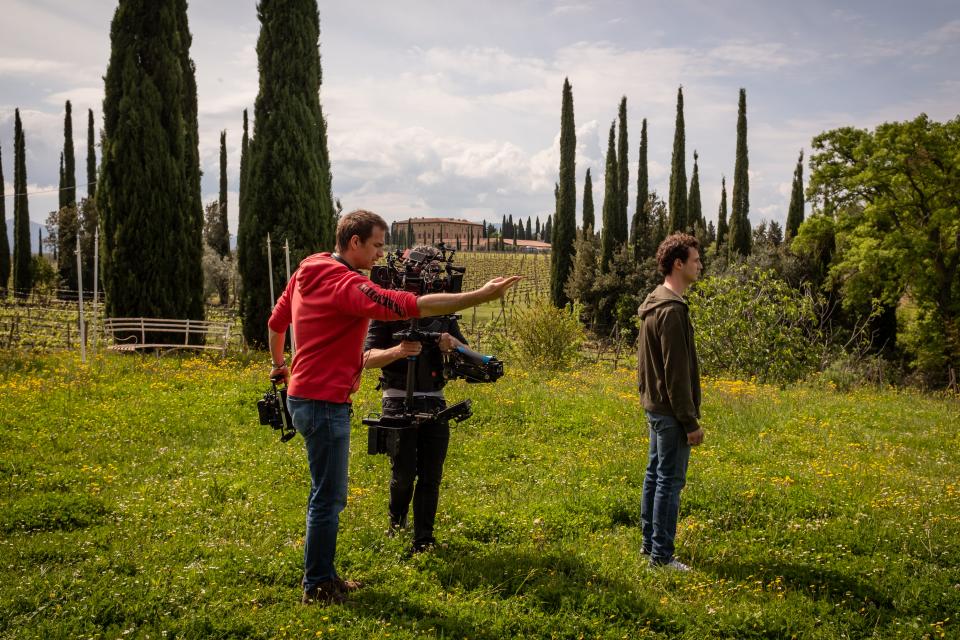Made in Italy Is a Sweet Father-Son Home Renovation Story
They say life imitates art, and that is certainly true in Made In Italy, the directorial debut from actor James D'Arcy (best known for his roles in Cloud Atlas, Dunkirk, Avengers: Endgame, and more). Like many a heartwarming flick to have come before it, this story is set against the beautiful landscape of Tuscany, and it stars real-life father and son Liam Neeson and Micheál Richardson as, well, father and son.
When Jack (Richardson) learns that his ex-wife’s family plans to sell their art gallery, which he manages, he convinces his dad, Robert (Neeson), to travel with him from the U.K. to Italy to renovate and sell a long-abandoned home they own there. The home belonged to Jack’s late mother, who died in a tragic accident when he was a child. The actors experienced a similar loss, when Neeson’s wife and Richardson’s mother, Natasha Richardson, died after a skiing accident in 2009, and production designer Stevie Herbert says their connection to the subject matter was palpable on set. “They were obviously incredibly professional, but I think we felt it as a crew,” she says. “Their connection as father and son was deeply moving on occasions.”
![“There were moments when we were filming and nobody spoke of [Neeson and Richardson’s personal connection to the subject matter],” says Herbert. “It’s too personal and everybody has work to do, but there was real emotion in the room.”](https://s.yimg.com/ny/api/res/1.2/ckUM4Xrj0aXI7sWqrM3Imw--/YXBwaWQ9aGlnaGxhbmRlcjt3PTk2MDtoPTY0MA--/https://media.zenfs.com/en/architectural_digest_422/51740ac411e632f8bb76f939e4d24a96)
Another element of reality in this production was the house in question. Viewers of the film watch as Jack and Robert slowly bring the place from dilapidated to charming, and the crew renovated the space right along with them. Herbert and her team constructed a set inside of the Italian country house they used for exterior shots, which was located near the town of Montalcino. “The house that existed was beautiful, and I doubt we ever shot it completely as it on the interior. Even the sort of polished version that turns up near the end of the film was my build,” she says.

Even still, the house they used was the result of a long search for something that wasn’t too modernized, had “intimacy,” to its layout, and didn't have a pool—a rare find in the popular, wealthy area where many homes have been upgraded with amenities as of late. “The owner was an octogenarian, which was fantastic for us because that is why the house looked the way that it looked,” she says, estimating that the place had been renovated sometime in the 1970s or ’80s. “What I had to do was take it back 20 years, which is easy to do in a building that still has thick walls, casement windows, and beautiful shutters. We did a complete dress of it and we dressed the grounds as well. We filled in walls and arches. I think I probably transformed it back to what it was like when it needed renovating.”

The centerpiece of the home in the film is a large mural on the living room wall, painted by Robert, who is an accomplished artist, after his wife’s death. “He created it as a cry of pain,” explains set decorator Gina Cromwell. A British artist named Annie Rose Fiddian-Green created the piece, along with numerous other paintings of Robert’s which appear in the film (a few other artists were also brought in to help create the large body of work). “It took several days to build up the layers of the mural, standing back regularly to assess and adjust, always with a hard eye. The whole room was a canvas, but the mural was the centre point of rage and loss, an expression of grief and rage,” says Cromwell.

For Herbert, the most important thing was ensuring that the art matched the character’s state of mind as he went through the different stages of his life. “I had a constant line with Annie where we talked about where Robert was at that point in time and who he was. We had to constantly think about his headspace.” This exercise was a reminder of the most important aspect of her job as a set designer, she says: “It’s not what you like. It’s standing in that space [of the characters]. Part of my job is to get that across, so everybody can be those characters.”
Originally Appeared on Architectural Digest

 money
money 